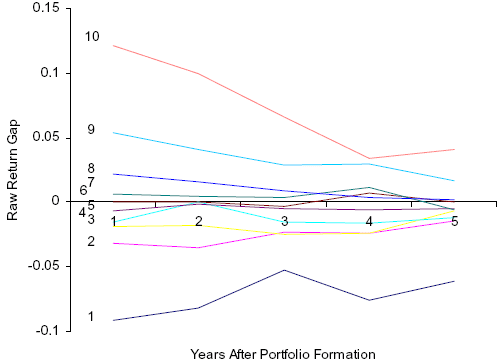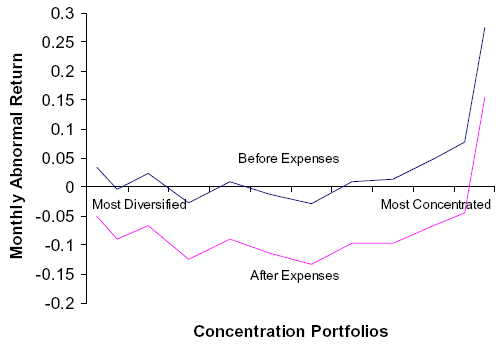What makes some mutual fund managers better than others? A series of three recent papers triangulate on the answer to that question by investigating the importance of public and private information to fund managers. Using data for 1,700 equity mutual funds over the period 1993-2002, “Fund Manager Use of Public Information: New Evidence on Managerial Skills” by Marcin Kacperczyk and Amit Seru examines the responses of mutual fund managers to news (changes in public information). Using data for over 2,500 equity mutual funds over the period 1984-2003, “Unobserved Actions of Mutual Funds” by Marcin Kacperczyk, Clemens Sialm and Lu Zheng tests the impacts of unobserved (not immediately or precisely disclosed) mutual fund manager actions on fund returns. Using data for over 2,300 equity mutual funds over the period 1984-2003, “Industry Concentration and Mutual Fund Performance” by Marcin Kacperczyk, Clemens Sialm and Lu Zheng studies the relationship between industry concentration and fund returns. Respectively, these papers conclude that:
The degree to which mutual fund managers rely on public information (public analyst recommendations) relates negatively to fund performance. Conversely and inferentially, mutual fund managers who develop and rely on private information about markets and companies tend to outperform. The outperformance of managers who rely on private information is attributable to genuinely superior stock-picking skills. Fund managers who rely most on public information take on higher risk, perhaps in an uninformed effort to relieve their underperformance.
The gap between the performance of disclosed mutual fund positions and actual mutual fund performance, reflecting interim trading, is persistent. The following plot, taken from the second paper, illustrates gap persistence for ten portfolios of funds formed on initial gap size. In other words, the unobserved actions of some fund managers reliably add value, while those of other fund managers reliably subtract value. The 10% of funds with the most positive gaps as a group outperform the market by an average 1.2% per year, while the 10% with the most negative gaps underperform the market by an average -2.2% per year.
Industry-concentrated mutual funds, which generally overweight growth and small-cap stocks within selected industries, tend to outperform on a risk-adjusted basis. The 5% of funds with the highest concentrations as a group outperform the market by an average 1.85% per year after expenses, while the 5% with the lowest concentrations underperform the market by an average -0.6% per year after expenses. The following plot, taken from the third paper, depicts this result using monthly returns. The outperformance of the most concentrated funds suggests that their managers are acting on valuable private information about industries or about stocks within industries.
In summary, persistent outperformance in investing depends on the hard work of developing and applying valuable private information, not on reacting to what everyone else knows.

